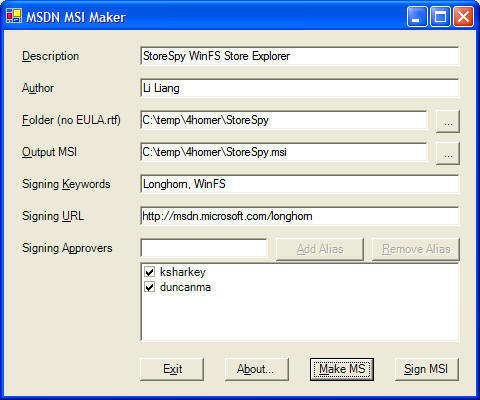Friday, May 21, 2004, 12:00 AM in The Spout
Another Killer App for Web Services
Friday, May 21, 2004
At the last Applied XML Dev.Conf., I went ga-ga over Amazon's use of web services in their business and called it the "killer app for web services." Now I'd like to revise my statement: it think that it's one of the killer apps for web services.
Here's another one: exposing the functionality of all of those internal corporate services apps that are now exposed as web sites as web services instead.
Now that I've been back inside of a giant corp. adrift in a sea of sites to "help" me with the various "business processes" that I have to execute, I yearn for them all to be exposed as web services. There are several problems with the internal business-processes-as-web-apps morass that we're stuck in:
The web apps are generic for all uses across all companies, which means that there are tons of options for other uses then mine, but I still have to deal with the UI for all of the options
To get my business tasks accomplished, I have to string together several of these web apps in series, manually moving the data from one to the other
Just going from one page of a web app to another, even in a corp. intranet, is so slow when you are always going to pick the same options and your fingers want to be far ahead of what the server can handle when generating the UI a page at a time
For example, here at MSDN, we have package source code sent to us by authors into an MSI with a EULA, code sign it with the Microsoft key and submit it for download to the MS download site. A year ago, it took me an hour of instruction to understand the process and it involved using VS.NET to build the MSI and two separate web sites, both with several pages and tons of fields to get a folder of files available for download by our good readers. This took me 30-60 minutes to do each time I had to do it, which made me cranky, so I built this:

This tool takes the minimum number of fields necessary to turn the source files provided by the author into a signed MSI. Plus, it's a smart client, so the UI is snappy and I can make it smart about what specifically it should remember between sessions for our own uses. And, I can provide a single UI for multiple back-end services, duplicating the data between them as necessary w/o requiring the user to duplicate the data for me.
The way I was able to minimize the number of fields was to build all kinds of assumptions into the app based on how MSDN does things, aka the business rules, and build my own app that programmatically generates when I need. In other words, my app combines business rules with programmatic interfaces to save me and my friends all kinds of time (the process is now about 10x faster than it used to be and 100x less tedious and less error prone).
And that's the beauty of allowing programmatic access to internal business processes: it allows each group in the company to build specific apps that meet their needs more specifically, letting them consolidate the processes into their own group-specific tasks. Not only does this speed things up and increase consistency for our customers, but it also removes the tedium and lowers the possibility of human error. If you could gain all those benefits, would you do it? That's the promise of web services and SOA when applied internally, because it allows the groups that provide the services to be general-purpose, meeting the needs of all groups, but lets each group be specific when they apply it, instead of forcing a web interface that requires everyone to be general.
Am I alone in getting aroused when thinking about this kind of thing? : )